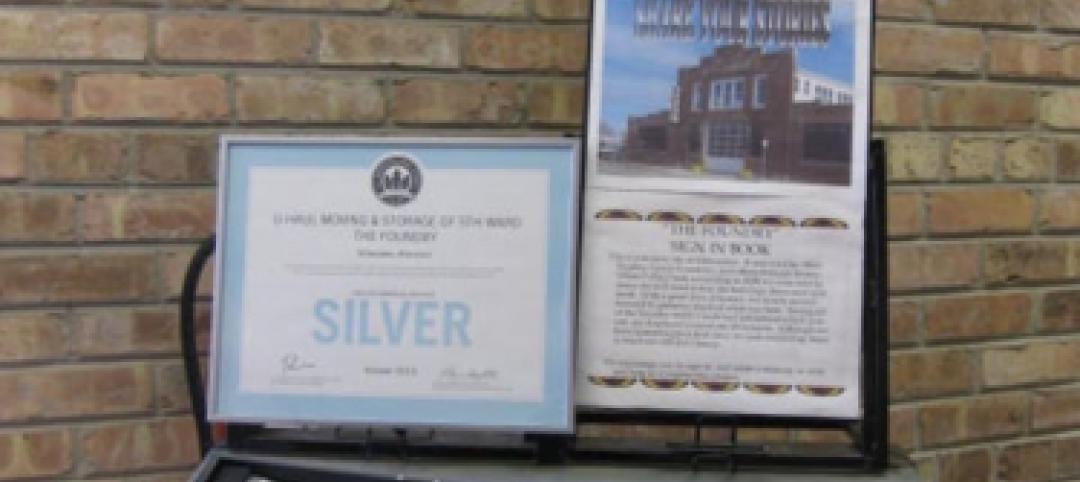In less than half a decade, the wellness movement has taken hold in the global real estate market. As of mid-April, nearly 2,600 building projects across the globe were either certified or registered through the International WELL Building Institute’s WELL Standard or the Center for Active Design’s Fitwel rating system.
Even more impressive, 4,360 design, construction, and real estate professionals have earned their WELL Accredited Professional status, and another 3,485 WELL APs are in the making. Tack on Fitwel’s cadre of 1,900+ “Ambassadors” and active users, and we’re looking at an army 9,400 strong pushing the merits of these programs.
Corporate America also has jumped on the wellness train. In 2017, nearly half of all worksites in the U.S. offered some type of health promotion or wellness program, including an astounding 92% of worksites with 500+ employees, according to the Centers for Disease Control and Prevention.
Clearly, wellness in the workplace has become big business, especially for large employers that hope their investment in healthier, lower-stress work environments will lead to improved employee health and, ultimately, lower healthcare costs.
ALSO SEE: Half of corporate and government offices offer wellness programs (CDC study)
But getting wellness to pay off may not be that simple, or even a wise investment to begin with, as evidenced by a peer-reviewed study published last month in The Journal of the American Medical Association (BDCnetwork.com/WellnessStudy19). The study involved a randomized trial of 32,974 employees across 160 worksites (20 sites with wellness plans, 140 control sites) at a large U.S. warehouse retail company.
First the good news: After 18 months, the worksites with the standardized wellness program had an 8.3-percentage point higher rate of employees who reported engaging in regular exercise (69.8% vs. 61.9%, with an adjusted difference of 0.03) and a 13.6-percentage point higher rate of employees who reported actively managing their weight (69.2% vs. 54.7%).
Now the not-so-positive news: When looking at the traditional measures of health, particularly as they pertain to health insurance premiums—namely cholesterol, blood pressure, and body mass index—there were no significant differences between the treatment group and the control group after 18 months. The same for healthcare spending and utilization, absenteeism, tenure, job performance, sleep quality, and even food choices.
It seems, according to this study at least, that workplace wellness programs can create environments that promote improved health behaviors among employees, but achieving lower healthcare spending and utilization are a stretch.
On another note, the BD+C editorial team needs your input for a first-of-its-kind AEC industry research project. For more than 40 years, BD+C editors have ranked the nation’s largest AEC firms as part of our annual Giants 300 Report. This year, we’re launching a companion research survey focused on tech and innovation trends at AEC Giant firms. If your firm is an AEC Giant and is adopting and vetting advanced tech tools, we invite you to participate in our 10-minute, 11-question Giants Tech and Innovation Survey. The results will be published this fall in BD+C. Take the survey at: BDCnetwork.com/TechSurvey19.
Related Stories
| Mar 12, 2012
Improving the performance of existing commercial buildings: the chemistry of sustainable construction
Retrofitting our existing commercial buildings is one of the key steps to overcoming the economic and environmental challenges we face.
| Mar 6, 2012
Gensler and Skender complete new corporate headquarters for JMC Steel in Chicago
Construction was completed by Skender in just 12 weeks.
| Mar 6, 2012
Joliet Junior College achieves LEED Gold
With construction managed by Gilbane Building Company, Joliet Junior College’s Facility Services Building combines high-performance technologies with sustainable materials to meet aggressive energy efficiency goals.
| Mar 2, 2012
By the Numbers
66 skyscrapers to built in China over six years; 1,000 questions in the Modern Architecture game; 21,000 new jobs.
| Mar 1, 2012
AIA: A clear difference, new developments in load-bearing glass
Earn 1.0 AIA/CES learning units by studying this article and successfully completing the online exam.
| Mar 1, 2012
Bomel completes design-build parking complex at U.C. San Diego
The $24-million facility, which fits into a canyon setting on the university’s East Campus, includes 1,200 stalls in two adjoining garages and a soccer field on a top level.
| Mar 1, 2012
Reconstruction of L.A.’s Dunbar Hotel underway
Withee Malcolm Architects’ designs for the project include the complete renovation of the Dunbar Hotel and the Somerville Apartments I and II.
| Feb 28, 2012
Roofing contractors recognized for workmanship
Sika Sarnafil announces Project of the Year winners; competition highlights visually stunning, energy efficient, and sustainable roofs.
| Feb 26, 2012
Milwaukee U-Haul facility receives LEED-CI Silver
The new elements of the facility now include: efficient lighting with day-lighting controls and occupancy sensors, a high-efficiency HVAC system used in conjunction with a newly constructed thermal envelope to help reduce energy consumption, and the installation of low-flow fixtures to reduce water consumption.
| Feb 22, 2012
Siemens earns LEED certification for Maryland office
The Beltsville facility, which also earned the ENERGY STAR Label for energy performance, implemented a range of energy efficiency, water conservation and sustainable operations measures as part of the certification process.

















